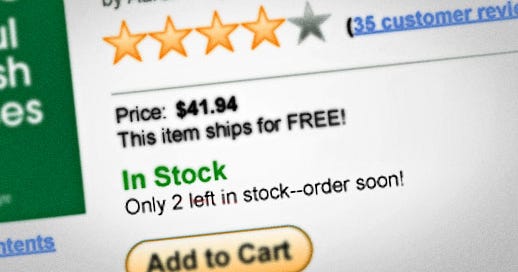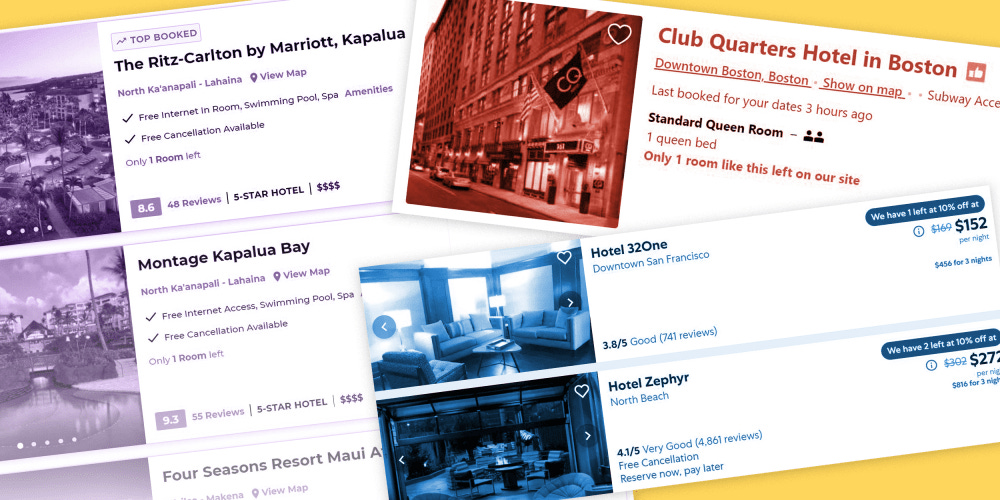Scarcity: When You Believe Something Is in Short Supply… You Want It More!
How Scarcity Shapes Our Decisions and How to Spot It in Marketing
Have you ever found yourself frantically refreshing a website to snag concert tickets the moment they go on sale?
Or maybe you've felt a sudden urge to buy that jacket just because it was the "last one in stock"?
If so, you've experienced the powerful effect of scarcity.
In this post, we'll explore why scarcity makes us tick, look at real-life examples of how it's used in marketing, and learn how to spot (and maybe resist) these tactics in our daily lives.
The Psychology Behind Scarcity
Why We Go Crazy for Things We Can't Have
It turns out, our brains are wired to want what's hard to get. Here's why:
Fear of Missing Out (FOMO): We hate the idea of missing a good opportunity.
Perceived Value: If something's rare, we automatically think it must be valuable.
Social Proof: If everyone wants it, we think we should want it too.
Remember the great toilet paper shortage of 2020? That's scarcity in action!
Types of Scarcity
Two Ways to Make Something Scarce
Limited Quantity: "Only 5 left in stock!"
Example: Limited edition sneakers that sell out in minutes.
Limited Time: "Sale ends at midnight!"
Example: Black Friday deals that last for just 24 hours.
Both types tap into our fear of missing out and can make us act fast.
Scarcity in Action – Real-Life Examples
How Companies Use Scarcity to Make Us Buy
Nintendo's "Limited" Supply
Remember when the Nintendo Switch was always sold out? Nintendo often "underproduces" to keep demand high. Result? People scramble to buy whenever it's in stock.
Amazon's Lightning Deals
Those countdown timers on Amazon's deals? Pure scarcity magic. They create urgency and make us buy things we might not even need.
Booking.com's "1 room left!" Alerts
Ever noticed those red alerts when booking a hotel? They use both quantity scarcity ("only 1 room left") and social proof ("15 other people are looking at this") to push you to book NOW.
Source:nbcnews.com
Spotting and Handling Scarcity Tactics
How to Shop Smart in a World of "Limited Time Offers"
Take a Breath: Before you buy, ask yourself: "Do I really need this?"
Do Your Research: Is it really scarce, or just marketed that way?
Set a Budget: Decide what you're willing to spend before you start shopping.
Use Wish Lists: Save items for later instead of buying immediately.
Remember: There will always be another deal, another product, another opportunity.
Applying Scarcity in Marketing Ethically
How to Use Scarcity Without Crossing the Line
While scarcity can be a powerful marketing tool, it's crucial to use it responsibly. Here's how marketers can implement scarcity ethically:
Be Honest: Never create fake scarcity. If you say there are only 10 items left, there should really be only 10 items. Example: Transparent inventory systems that show real-time stock levels.
Provide Value: Use scarcity to highlight genuine benefits, not to trick people into buying. Example: Limited-time access to an actually useful bonus feature with a subscription.
Respect Your Customers: Don't use high-pressure tactics that make people feel stressed or manipulated. Example: Allowing people to "save" a deal for 24 hours to decide, rather than forcing an immediate decision.
Be Consistent: If you say something is a "once in a lifetime" offer, don't repeat it next month. Example: Annual sales events that truly offer the best prices of the year.
Offer Alternatives: If something is sold out, provide other options or waitlist opportunities. Example: "This product is currently unavailable, but here are similar items you might like. Or, join our waitlist for the next batch."
Ethical Scarcity in Action
Case Study: Patagonia's Limited Production
Outdoor clothing company Patagonia often produces limited quantities of their items, not as a marketing tactic, but as part of their commitment to sustainability. They're transparent about this, explaining how limited production reduces waste and environmental impact.
This approach creates natural scarcity while aligning with the company's values and their customers' desire for sustainable products. It's a win-win: customers get unique, high-quality items, and Patagonia maintains its ethical stance.
The Balance of Scarcity and Abundance
Remember, while scarcity can drive short-term sales, building long-term customer relationships often relies more on providing abundance – of value, of service, of trust. The key is to find the right balance for your brand and your customers.
Conclusion
Scarcity is a powerful force in marketing and in our own minds. By understanding how it works, we can make smarter decisions about what we really need and value.
Next time you feel that urge to buy something just because it's "almost gone," take a moment to think. Is it the product you want, or just the thrill of getting something scarce?
What about you? Have you ever bought something because of scarcity tactics? Share your story in the comments!
Remember, the best things in life – like love, friendship, and sunshine – aren't scarce at all. Maybe those are the things we should value most.







